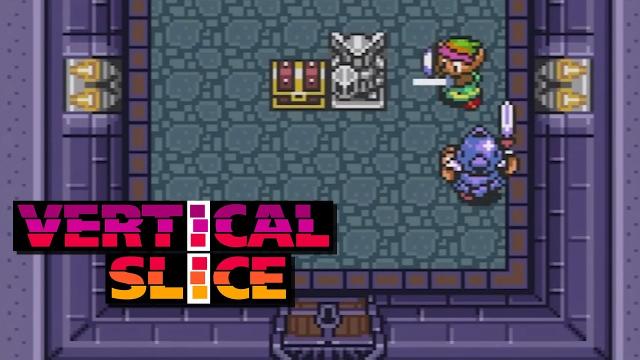You could make the best video game in the world all by yourself, without a degree in game design. All you need is to copy the first 10 minutes of The Legend of Zelda: A Link to the Past. Watch this one-hour video in which Super Mario Bros. 3 speedrun celebrity GrandPOOBear and I dissect the first 10 minutes of A Link to the Past in painstaking detail.
The segment is familiar to probably anyone who owned a Super Nintendo in the 1990s. Link is asleep in bed. Princess Zelda telepathically informs him that she is being held prisoner in the basement of the castle. Link awakens. Link’s uncle is sitting at the table with sword and shield in hand. He tells Link he’s going out. Me and GrandPOOBear pause the tape.
“I always wondered one thing,” he says. “Does Link’s uncle hear Zelda too?”
We rewind the tape. We notice that Zelda does not call Link by name. We discuss the nature of the Hero of Hyrule, whose title is passed down throughout generations. We conclude that a telepathic Princess Hotline is hereditary.
We talk to the guards stationed outside Link’s house, and discuss the contextual integration of each of their dialogue lines. In order to enter the castle, Link is going to need to lift a bush to expose a hole. Some of the guards near Link’s house tell him how to lift bushes, though they charmingly phrase it as a challenge: “You look strong for a kid. How much can you lift?”
Later in the video, we scrutinise the level design’s flawless pacing. We learn that sometimes enemies have keys. We learn that sometimes killing an enemy opens a locked door. We learn that sometimes doing what we can do, where we can do it is the seed of all Zelda puzzle solutions.
This opening segment introduces these core Zelda design elements (and more!) one at a time without ever requiring a little fairy to jump out of your backpack and yell at you.
This type of hard-hitting analysis and more awaits you in Vertical Slice, my new series exploring tiny segments of game in ridiculously minute detail in tandem with experts.
If you aren’t familiar, “Vertical Slice” is a video game industry term. It refers to a section of a game – usually a triple-A game – that contains a little tiny bit of every one of the game’s main systems.
Think of a game as a layered cake. Let’s say there are sprinkles on top, and then vanilla frosting under the sprinkles. Beneath this frosting is a layer of chocolate cake. Under this chocolate cake is a layer of butterscotch icing, underneath which is a layer of carrot cake, underneath which is a layer of chocolate icing, underneath which is a final layer of yellow cake, atop a layer of orange icing.
Maybe you’re thinking, “That’s a weird cake.” It is. Video games are weird cakes.
A “vertical slice” is a segment of a game which contains each layer of the cake. Naturally it behooves a developer to make this slice as skinny as possible, packing maximum impact into every molecule of the experience.
Now let’s imagine there’s a single cherry on top of the cake. Is the cherry a layer? You better believe it is. Now imagine some decorative icing of substantial thickness crowning the outer edge of the top layer of the cake. Do we split the cherry in obtaining our vertical slice? Is a sliver of cherry representative of its respective layer? Or must we consider a whole cherry itself a single unit of its layer, which contains only one unit?
Thus developing a vertical slice is a orchestra of game mechanics, art, narrative systems, level design, pacing and flow. Sometimes a game’s vertical slice looks like a cupcake; sometimes a game’s vertical slice is something we can only extract with a pineapple corer.
Whatever their shape or flavour, a closer look at these game chunks will likely educate and entertain many a viewer. I have spent the last two decades of my life either critiquing or developing video games – sometimes at the same time, if you know what I mean – so this subject has long been a receptacle of my deepest curiosity.
Have you ever played a wonderful demo, purchased the full game, and then quickly discovered that the demo was definitely the best part? That demo was probably a vertical slice. A parade of project managers and executive producers huffed and puffed that sublime little quarter-hour into existence. Rather than exclaim frustration at the rest of the game for not living up to its earliest grandiose promises, in this series we will analyse those golden moments for what they are: Good times.
Eventually, on a future episode, you’ll hear me say nice things about BioShock.
For now, though, please enjoy what GrandPOOBear and myself consider the best first 10 minutes of any video game ever, which just so happens to kick off what I would say without a doubt in my mind is the best holistically designed video game ever made.

Leave a Reply